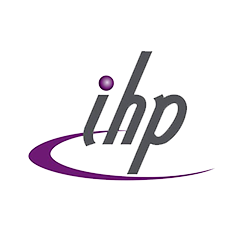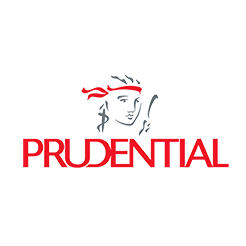What is Tennis Elbow (Lateral Epicondylitis)
Tennis elbow is a condition that results in pain around the outside of the elbow. It often occurs after strenuous overuse of the muscles and tendons of the forearm, near the elbow joint. As its name suggests, tennis elbow is sometimes caused by playing tennis. However, it is usually caused by a number of other physical activities.
What causes of Tennis Elbow?
Tennis elbow is caused by small tears in the muscles of the forearm due to overuse of the muscles or minor injury. It can also occur as the result of a single, forceful injury.
Excessive or repeated use of the muscles that straighten your wrist can injure the tendons in your arm and elbow and lead to tiny tears, which cause rough tissue to form near the bony lump on the outside of your elbow.
Tennis elbow often occurs after you do an activity that uses your forearm muscles when you have not used them much in the past. However, even if you use your forearm muscles frequently, it is still possible to injure them and develop tennis elbow.
Activities that might cause Tennis Elbow
The tendons in your elbow can be injured by overusing your forearm muscles in repeated actions, such as:
gardening – e.g. using shears
playing racquet sports, such as tennis or squash
sports that involve throwing, such as the javelin or discus
swimming
Tennis elbow can also develop in the workplace through carrying out repetitive tasks and actions, such as:
manual work that involves repetitive turning or lifting of the wrist, such as plumbing or bricklaying
repetitive, fine movements of the hand and wrist, such as typing, using computer mouse or using scissors
Your risk of developing tennis elbow increases if you regularly play racquet sports, such as tennis or squash, or if you play a racquet sport for the first time in a long time. However, despite its name, only 5 out of 100 people develop tennis elbow through playing racquet sports such as tennis.
The medical name for tennis elbow is lateral epicondylitis. This is because the pain usually occurs on the bony lump on the outside of the elbow, known as the lateral epicondyle. Pain can also occur on the inner side of the elbow, which is known as golfer’s elbow.
The Elbow Joint
The elbow joint is surrounded by muscles that move the elbow, wrist and fingers. The tendons in your elbow join the bones and muscles together and control the muscles of your forearm around the lateral epicondyle.
When a person gets tennis elbow, one or more of the tendons in their elbow becomes painful. The pain occurs at the point where the tendons of the forearm muscle attach to the bone. Twisting movements, such as turning a door handle or opening the lid of a jar, are particularly painful.
In around three quarters of cases of tennis elbow, the dominant hand (the one that is used the most) is affected.
What are the symptoms of Tennis Elbow?
The main symptom of tennis elbow is pain and tenderness on the outside of your elbow. You may also feel pain travelling down your forearm.
The pain is often worse when you use your arm and elbow, particularly for twisting movements. Repetitive wrist movements, such as wrist extension and repeated gripping, can also make the pain worse.
Tennis elbow can vary in severity, but you will usually have the symptoms listed below.
Recurring pain on the outside of your upper forearm, just below the bend of your elbow.Sometimes, you may also feel pain down your forearm towards your wrist.
Pain caused by lifting or bending your arm.
Pain when writing or when gripping small objects. This can make it difficult to hold small items, such as a pen.
Pain when twisting your forearm – for example, when turning a door handle or opening a jar.
Difficulty fully extending your forearm.
On average, a typical episode of tennis elbow lasts between six months and two years. Most people (90%) make a full recovery within a year.
The pain of tennis elbow can range from mild discomfort when using your elbow to severe pain that can be felt even when your elbow is still or when you are asleep. You may have stiffness in your arm that gets progressively worse as the damage to your tendon increases.
As your body tries to compensate for the weakness in your elbow, you may also have pain or stiffness in other parts of the affected arm or in your shoulder and neck.
How common is tennis elbow?
Tennis elbow usually occurs in adults. Men and woman are affected equally. The condition tends to affect people who are around 40 years old.
Outlook
Tennis elbow is a self-limiting condition. This means that in most cases the symptoms eventually improve and clear up without treatment. Anti-inflammatory painkillers can often reduce mild pain that is caused by tennis elbow. However, if your pain is severe or prolonged, a corticosteroid injection may be recommended. Occasionally, surgery may be used to treat very severe and persistent cases of tennis elbow. Most cases of tennis elbow last between six months and two years. However, in around 9 out of 10 cases, a full recovery is made within one year.
The pain caused by tennis elbow can last for some time. As tendons are slow to heal, the symptoms often last for a number of weeks or months. In severe cases, tennis elbow can persist for more than a year.
However, tennis elbow is a self-limiting condition, which means it will eventually get better with or without treatment.
There are non-surgical and surgical treatment options for tennis elbow. Before surgery is considered, managing the symptoms using non-surgical treatment is recommended. Surgery will only be recommended as a treatment of last resort, after non-surgical methods have not worked.
Non-surgical treatments for Tennis Elbow
If you have tennis elbow, you should rest the affected arm as much as possible and avoid doing any activities that put more stress on the tendons. Such activity modifications can be an effective way of reducing your painful symptoms. Examples of ways that you can modify activities include:
avoid lifting, gripping or rotating the affected arm
if you need to lift a heavy object, making sure that your palms are facing upwards to reduce the strain on your wrist musclestake regular breaks when you are at work
discuss with your employer altering any strenuous activities that could cause you pain and aggravate your affected arm
Painkillers for Tennis Elbow
Taking painkillers, such as paracetamol and ibuprofen, may help to reduce mild pain that is caused by tennis elbow. Children under 16 years old should not take aspirin.
Non-steroidal anti-inflammatory drugs (NSAIDs)
As well as tablets, anti-inflammatory painkillers are also available as creams and gels. These are often known as topical NSAIDs because they are applied directly to a specific area of your body, such as your forearm or elbow.
Some NSAIDs are available at pharmacists over the counter. Others are only available on prescription. Your pharmacist or GP can advise you about which NSAID is most suitable for you. Examples of topical NSAIDs include ibuprofen, ketoprofen and piroxicam.
These have been proven to provide some pain relief for musculoskeletal conditions (those that affect the muscles or bones), such as tennis elbow.
NSAID creams or gels should be gently rubbed into the area that is causing pain and discomfort. Make sure that you read the patient information leaflet that comes with your cream or gel to check how often the treatment should be applied.
Anti-inflammatory creams and gels are often recommended for tennis elbow rather than anti-inflammatory tablets. This is because gels and creams provide effective pain relief and reduce inflammation without causing side effects, such as nausea and diarrhoea.
However, photosensitivity reactions can sometimes occur while using ketoprofen. Therefore, avoid exposing the affected area to sunlight while using ketoprofen and for two weeks after the treatment has finished.
Avoid using topical NSAIDs during pregnancy and breastfeeding. Many topical NSAIDs are also unsuitable for children. Ask your GP or pharmacist for advice if you are not sure about whether a topical NSAID is suitable for you or your child.
Corticosteroid injections for Tennis Elbow
A corticosteroid injection may be recommended if you have particularly painful tennis elbow that is making movement difficult. Corticosteroids are a medication that contain steroids (a type of hormone). A corticosteroid injection will reduce the pain in your arm.
The injection will be made directly into the painful area around your elbow. Before you have the injection, you may be given a local anaesthetic to numb the area so you do not feel any further pain while the injection is being given.
Most people who have a corticosteroid injection find that their pain initially improves significantly. However, a study of 198 people has shown that corticosteroid injection treatment is only effective in the short-term (around six weeks), and its long-term effectiveness is poor.
Research has shown that when compared to physiotherapy and a ‘wait and see’ approach to see if symptoms disappear naturally, corticosteroid injections were not as effective at 52 weeks. They were effective in the short term, at six weeks after the treatment. High recurrence rates have also been reported in people who have corticosteroid injections.
The recommended time in between corticosteroid injections is six weeks.
Potential side effects of corticosteroid injections include:
pain in the affected area after having the injection
skin depigmentation – the loss of colour (pigment) around the injection site
wasting away of the surrounding subcutaneous tissue (the layer of tissue beneath the surface of the skin)
Before you decide to have corticosteroid injections to treat tennis elbow, discuss the effectiveness and potential side effects with your GP. This will enable you to make a well-informed decision about this type of treatment.
After having a steroid injection (or injections), take care to rest your arm. Avoid putting too much strain on it too quickly. As with any injury, you should gradually build up to your normal activity levels to help prevent the problem reoccurring.
Physiotherapy for Tennis Elbow
If your tennis elbow symptoms are particularly severe or persistent, your GP may refer you to a physiotherapist (a healthcare professional who is trained to use physical methods, such as massage and manipulation, to promote healing).
A physiotherapist will be able to show you exercises to help stretch and strengthen your forearm muscles. They may also recommend that you wear a splint (an elasticated band that is positioned just below the elbow joint) to help support your elbow and encourage the tendons to heal.
Shock wave therapy for Tennis Elbow
Shock wave therapy is where high-energy sound waves are passed through the skin of the affected area to help relieve the pain of tennis elbow and improve mobility (movement).
Depending on the severity of your pain, shock wave therapy may be given once or it may be repeated. You may have a local anaesthetic during the procedure to prevent you feeling any pain while the shock waves are being passed through your skin.
Following shock wave therapy, potential side effects include:
bruising
red skin
inflammation (swelling) of the skin
skin damage around the area being treated
Research has shown that shock wave therapy is safe. However, NICE states that there is a lack of evidence of its effectiveness in treating tennis elbow, and more research is required.
Your GP may recommend shock wave therapy if other non-surgical treatments have proved to be ineffective in relieving your symptoms of tennis elbow. Discuss the potential risks, benefits and side effects with your GP.
Acupuncture for Tennis Elbow
Acupuncture is a type of complementary treatment where fine needles are inserted into the skin around the affected area. In some cases, this may reduce pain and improve movement. However, there is a lack of evidence that it relieves the symptoms of tennis elbow.
Surgery for Tennis Elbow
Surgery may be recommended as a last resort treatment option in rare cases of severe or persistent tennis elbow. Surgery aims to relieve the painful symptoms by removing the damaged part of the tendon.
If you think you might be having Tennis Elbow, call for an appointment (+65 64401200 / 67371100) to have it assessed by Dr. Jonathan Y. Lee.
For more information on Tennis Elbow and New approaches to the treatment of these tendon injuries, read our next post.


